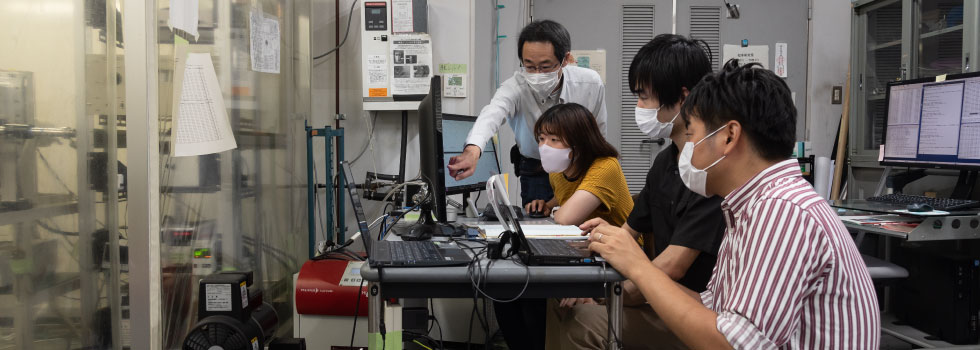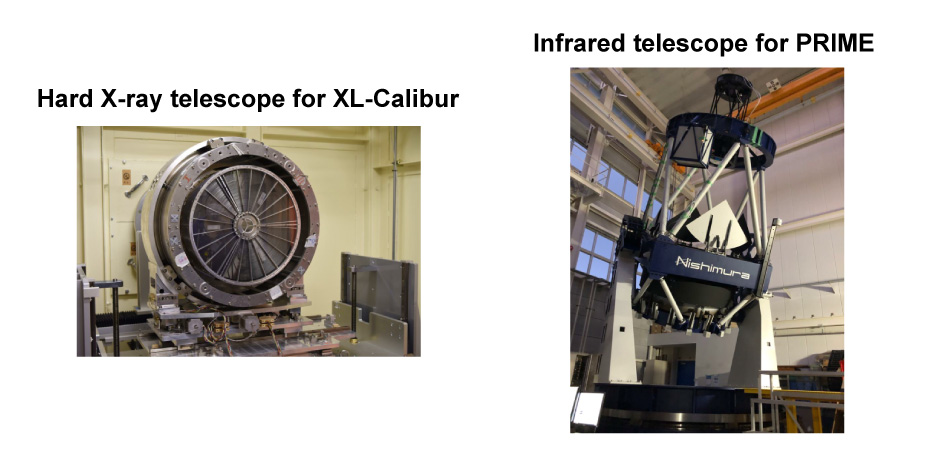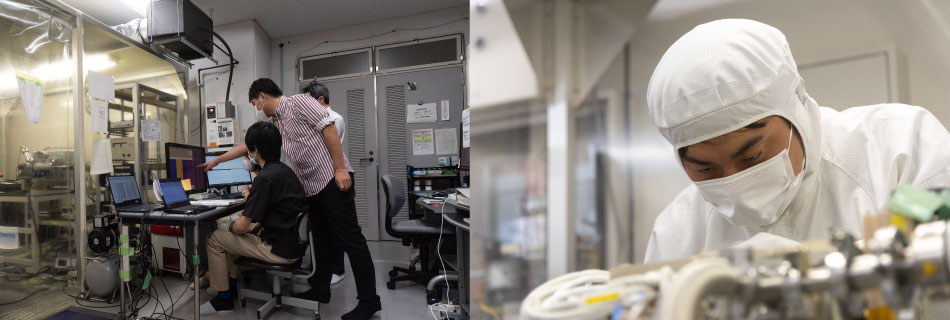
Observational study of physics in extreme celestial objects such as black holes, and search for exoplanets and cosmic life signatures.
The research subjects of this division are the observational study of the physics of extreme celestial objects such as black holes, and the search for exoplanets and cosmic life signatures. Our goal is to develop and operate instruments for these studies using state-of-the-art technology to observe X-rays and infrared rays. We are developing an X-ray telescope for the XL-Calibur project which aims to detect X-ray polarization from celestial objects. We are also developing equipments for the near-infrared exoplanet search project, PRIMES.
FEATURE
We are developing instruments for studying the universe by ourselves.
We operate these instruments, obtain observational data, and analyze the data by ourselves.
We focus on X-ray and infrared, which are important electromagnetic wave for studing the universe.
We are challenging cutting-edge research issues with unique methods.
RESULTS
Research progress
We are developing X-ray telescopes and infrared telescopes.
X-ray polarimetry observations have been done for only a few objects. We aim to realize full-scale X-ray polarimetric observations in future, and we join the baloon X-ray polarimetry experiment XL-Calibur. XL-Calibur is an interbational collaboration by Japan, the United States, and Sweden. Osaka University is developing an X-ray telescope for the project together with ISAS, Hiroshima University, Ehime University, OIST, Nagoya University, and so on. Also we are leading the PRIME project, which will conduct the largest gravitational microlensing surveys in the infrared band. The survey observations are essential to discover many exoplanets and to understand the formation of planets. We build a new 1.8m telescope at SAAO in South Africa dedicated to PRIME.

Further development
We will promote the interbational projects such as Athena, FORCE, and Roman.
In collaboration with other domestic agencies and with NASA Goddard Space Flight Center, we are working on the FORCE project to observe high-energy X-rays with high angular resolution. We also participate in the Athena project, a big X-ray astronomy satellite of the European Space Agency. One of the main objectives of these projects is to elucidate the growth mechanism of giant black holes. In space infrared observations, we join the Roman project of the United States as the coordinator of Japanese researchers. It is expected to elucidate the process of the birth of galaxies, stars, and planetary systems after the birth of the universe in the Big Bang.
